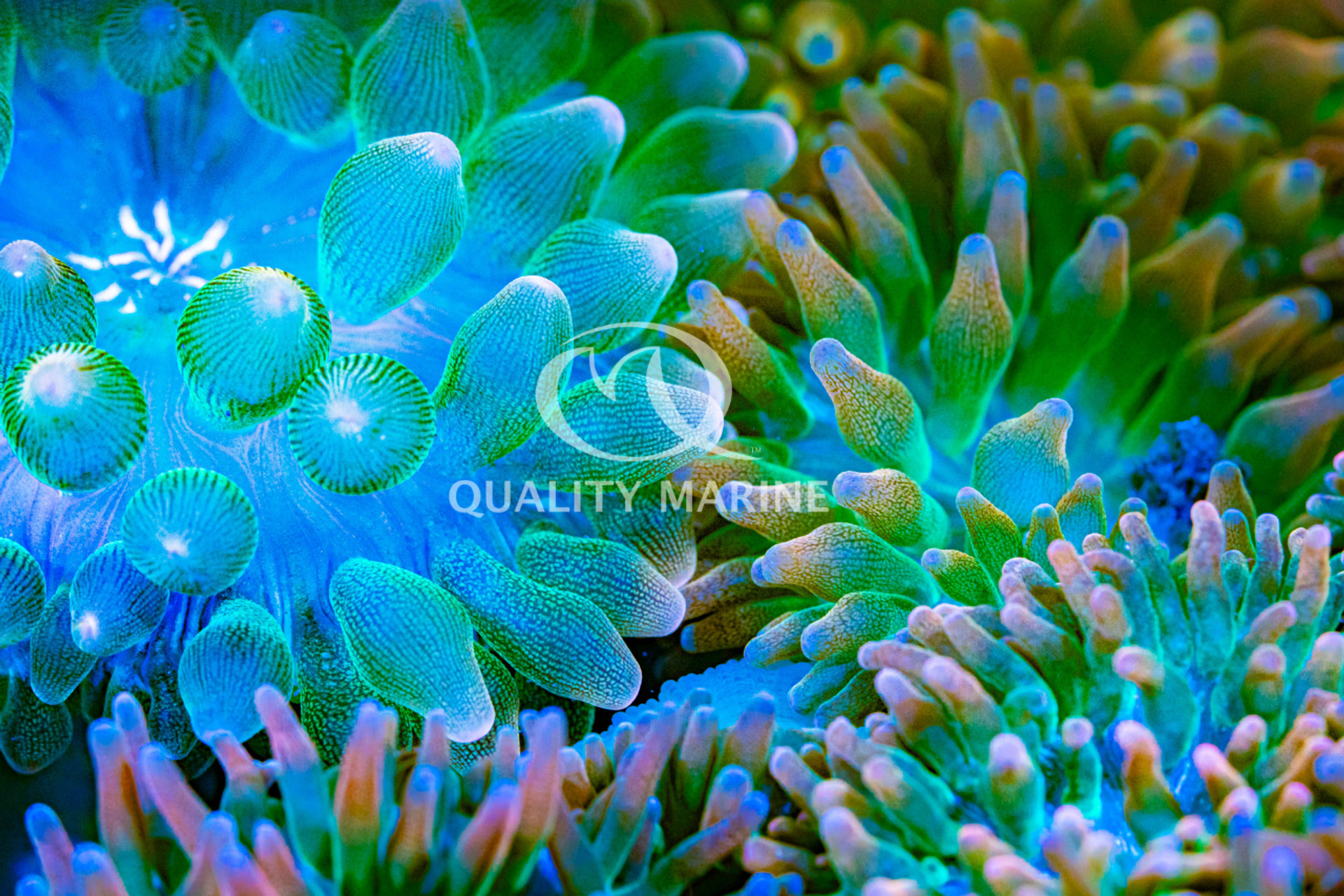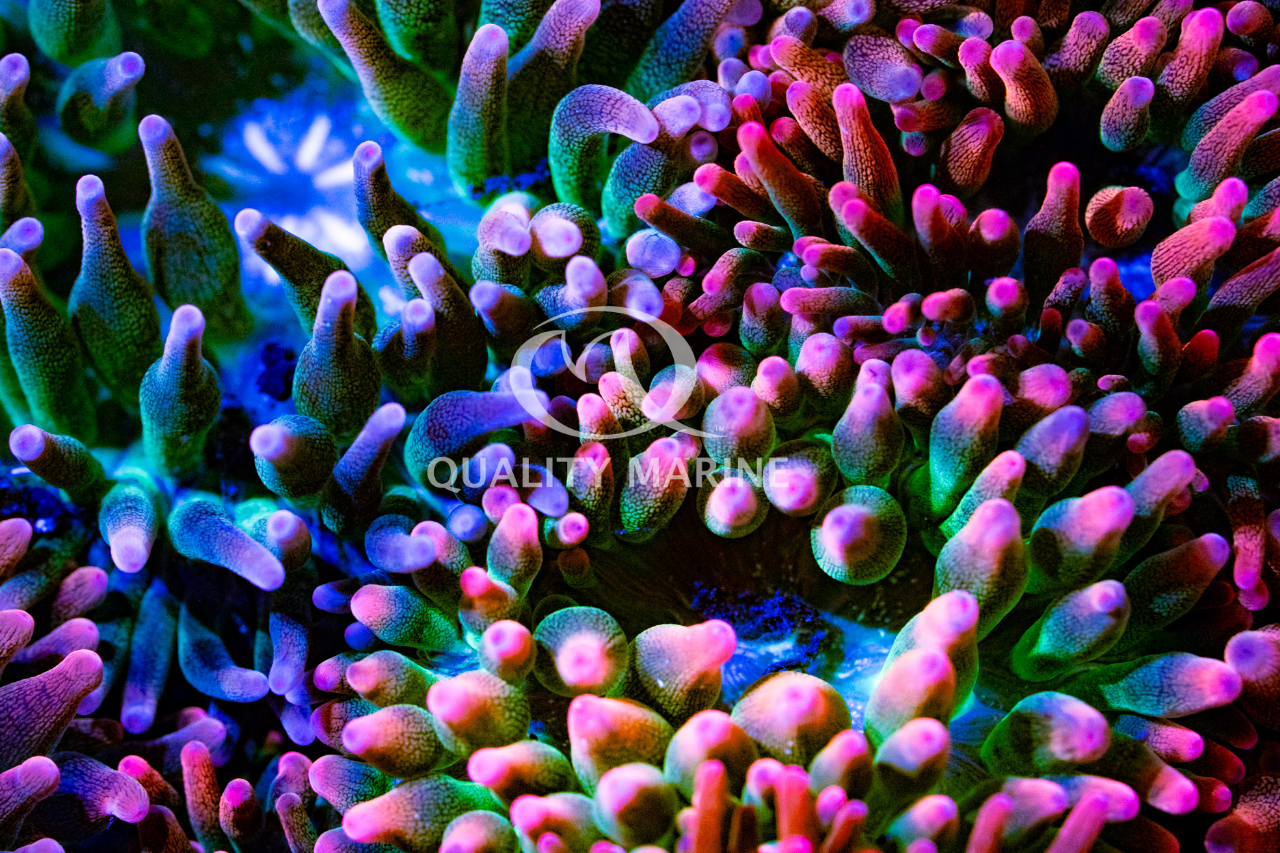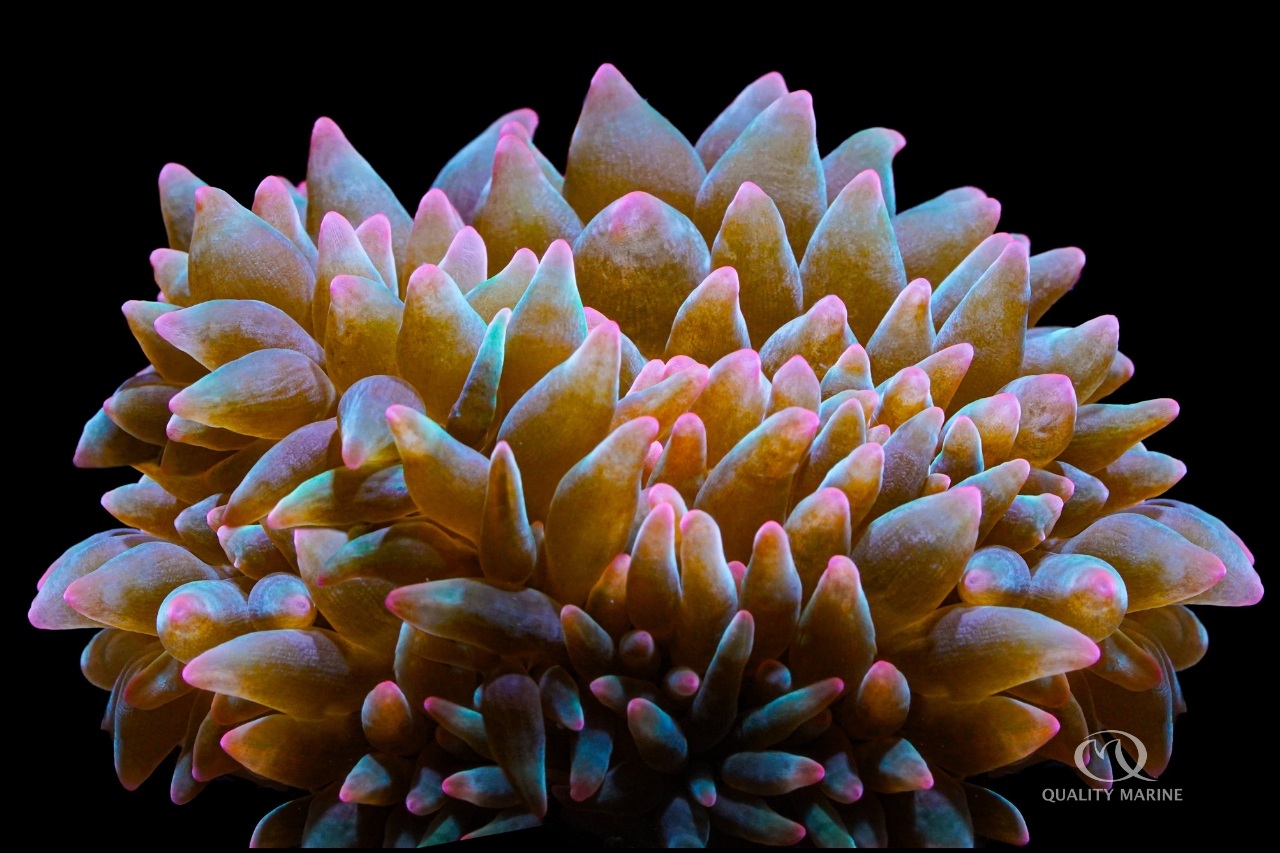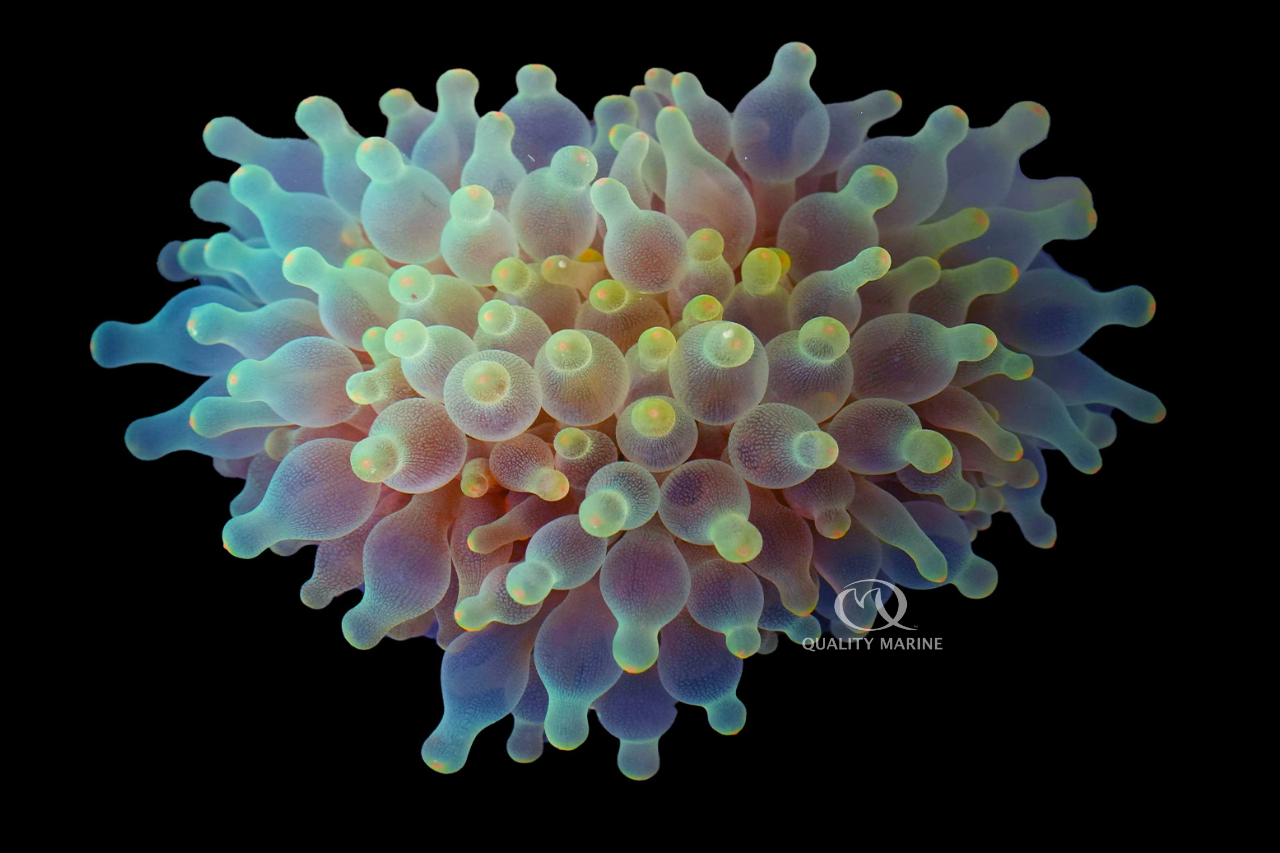Betting on Bulbs


In the warm, sun-drenched waters that span from Micronesia to the Red Sea, vibrant coral reefs are home to one of aquarium keeping's most iconic species: the Bulb Anemone (Entacmaea quadricolor) a sentinel of symbiosis and adaptation. In their natural state, Bulbs thrive in habitats ranging from shallow, sunlit reefs, even some exposed at high tide, to deeper, more solitary realms beyond the reach of much light at all. They are incredibly beautiful and come in a wide variety of colors and even forms. Sometimes bright pink, sometimes orangish, and occasionally a wild blend of red, pink, orange and white, they are also found in various shades of green and brown. They can be a mass of tight bubbles or spread out with long thin tentacles. Some of them will stay small, splitting into multiples before they ever get bigger than a few inches from edge to edge, while some will spread out and sprawl, getting up to eight inches across or more!
Central to the Bulb Anemone's vitality is its relationship with photosynthetic algae, (aka zooxanthellae) nestled within it. This alga provides a portion of the Anemone's nutritional needs, thus strong lighting is a requirement for most Anemones. They'll do best in the higher lighting locations in your tank, but some may need to be acclimated to super intense light slowly. Bulbs will also migrate a bit in a tank and will often find themselves a place they like. Over the years, it's been our experience that once they find a spot like that, you should leave them there, unless its someplace bad for them, like an intake or a heater... Bulb Anemones are best as the only sessile (in one place) invertebrate in a tank. They're gorgeous enough to be worth it, and they won't wander into polyps or corals which can end badly for both the nem and whatever it wanders into. If you're dead set on having your anemone in a mixed reef environment, it makes sense to add your Bulb Anemone (or any Anemone for that matter) to your tank before adding many other invertebrates so it can find its home.

Reproduction for the Bulb Anemone occurs through both sexual spawning and asexual division, with the latter often leading to genetically identical clones in shallow reef environments. While sexual reproduction is wildly unlikely in the home aquarium, asexual division happens more often than not. A LFS here in Los Angeles had a display a few years ago that was 90 gallons full of Rose Bulb Anemones that had all split from one parent colony, and it was truly spectacular (the big group of Skunk Clowns in them was also a chef's kiss). Yet another reason to consider keeping Bulb Anemones as the only invert in your display. Even if you don't want to have more than one, there are very few fish stores that wouldn't be interested in buying the new Anemones off you! If you buy Bulb nems in a group, out of the same display, they'll have no problem cohabiting. Do not try to mix them with other Anemone species.
As we noted, earlier, symbiotic algae only supply some of the nutrition needed by Bulb Anemones. The rest they have to get by eating. Most small bulbs won't need feeding more than once or twice a week. Small bits of frozen food, like Chopped Prawn, Chopped Clam, or even Krill from Gamma Foods are excellent choices. The food must be smaller than the length of the oral opening. For those of you who want to have Clownfish with your Anemone, some Clowns will feed their nems themselves. Even if this is the case, we suggest offering the Anemone some food on a weekly basis anyway. If it takes it, it needed it, if it doesn't take it, the clowns surely will.
For those who choose to invite a Bulb Anemone into their aquascapes, the rewards are manifold, and the care is actually pretty easy. The water quality stuff you've probably heard before. Keep your temp between 72 and 78 Fahrenheit, keep the specific gravity nice and stable at 1.025 or 1.026. Shoot for a stable pH between 8.0 and 8.4 and keep the nitrate under 5ppm. The Anemone will like a good bit of turbulent flow, between 10 and 40 times the total volume of the system in flow, but what they don't want is to be blasted by it in the face. Make sure their flow is indirect and non-laminar (not uniform in direction).

One of the greatest pluses of Entacmaea Anemones is the huge variety of fish that will use it as a host. Almost all captive clownfish will find their way into it, we've seen the Bulb Anemone play host to everything from aquacultured Ocellaris Clowns to big bad, wild Maroons. Clarkiis, Skunks, Tomatoes and even the myriad of cultured Perculas have all been seen in one at one time or another. There is no guarantee that your clownfish are gonna like any Anemone, you get them, but if you want to play the odds, get them a Bulb Anemone. There aren't really too many other fish that are a problem to house in the same tank as Entacmaea, we would avoid really clumsy swimmers like Dragonettes that could find themselves a meal, and some Butterflies that might pick on the Anemone etc.
For aquarists, observing the Bulb Anemone in action is a lesson in science and wonder. Their ability to thrive in captivity, often displaying a propensity for asexual reproduction under optimal conditions, makes for a display that is hard to beat in the confines of one's own home. Add in some symbiotic Anemonefishes and watch them dart in and out, purposeful in their deliveries, ensuring their mutual prosperity in the microcosm of the aquarium. We have no higher recommendation for someone looking to have an Anemone in the home aquarium. If you're interested, head to your Local Fish Store, and ask them about getting you a Bulb Anemone (Entacmaea quadricolor) from Quality Marine today!